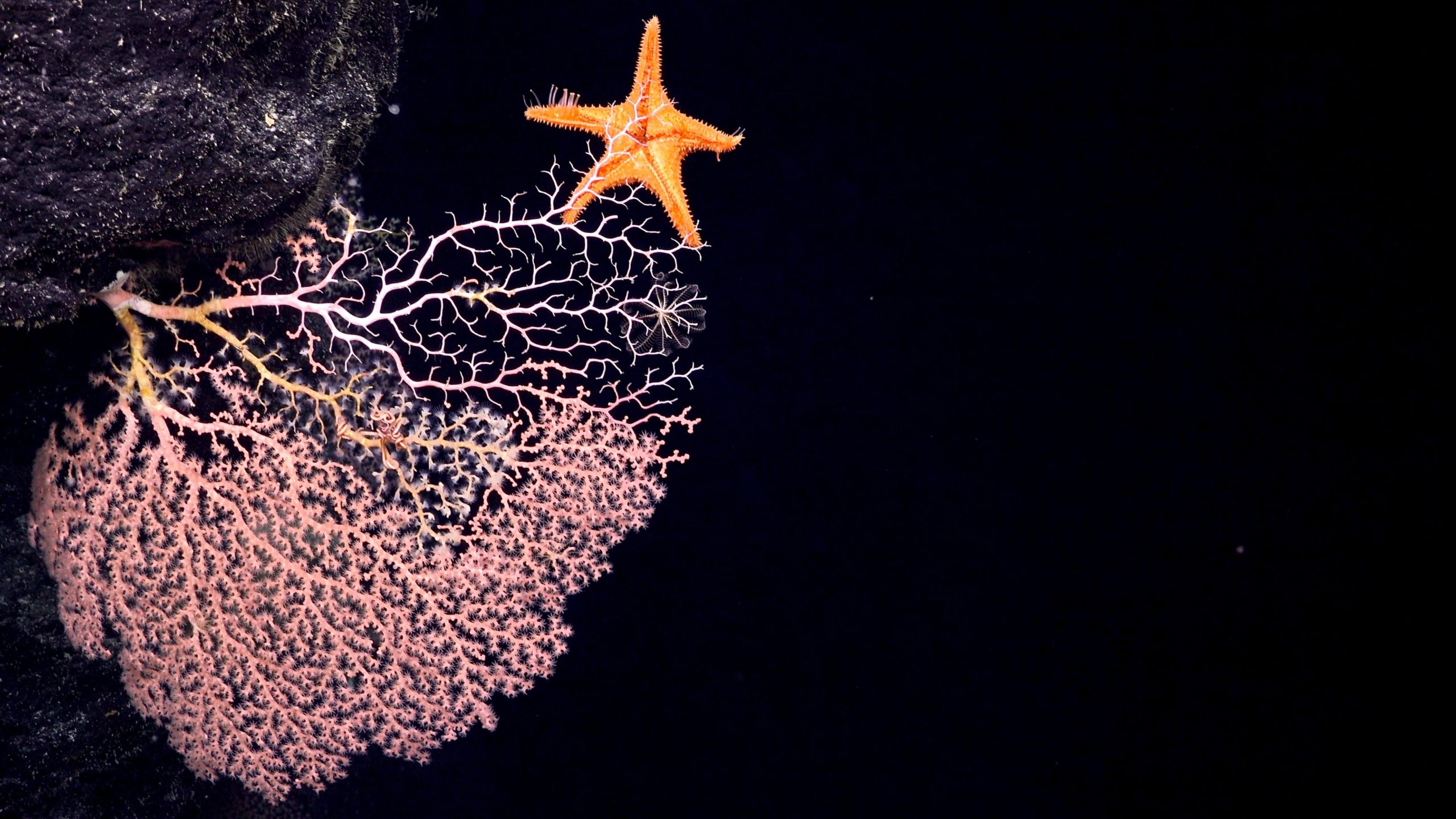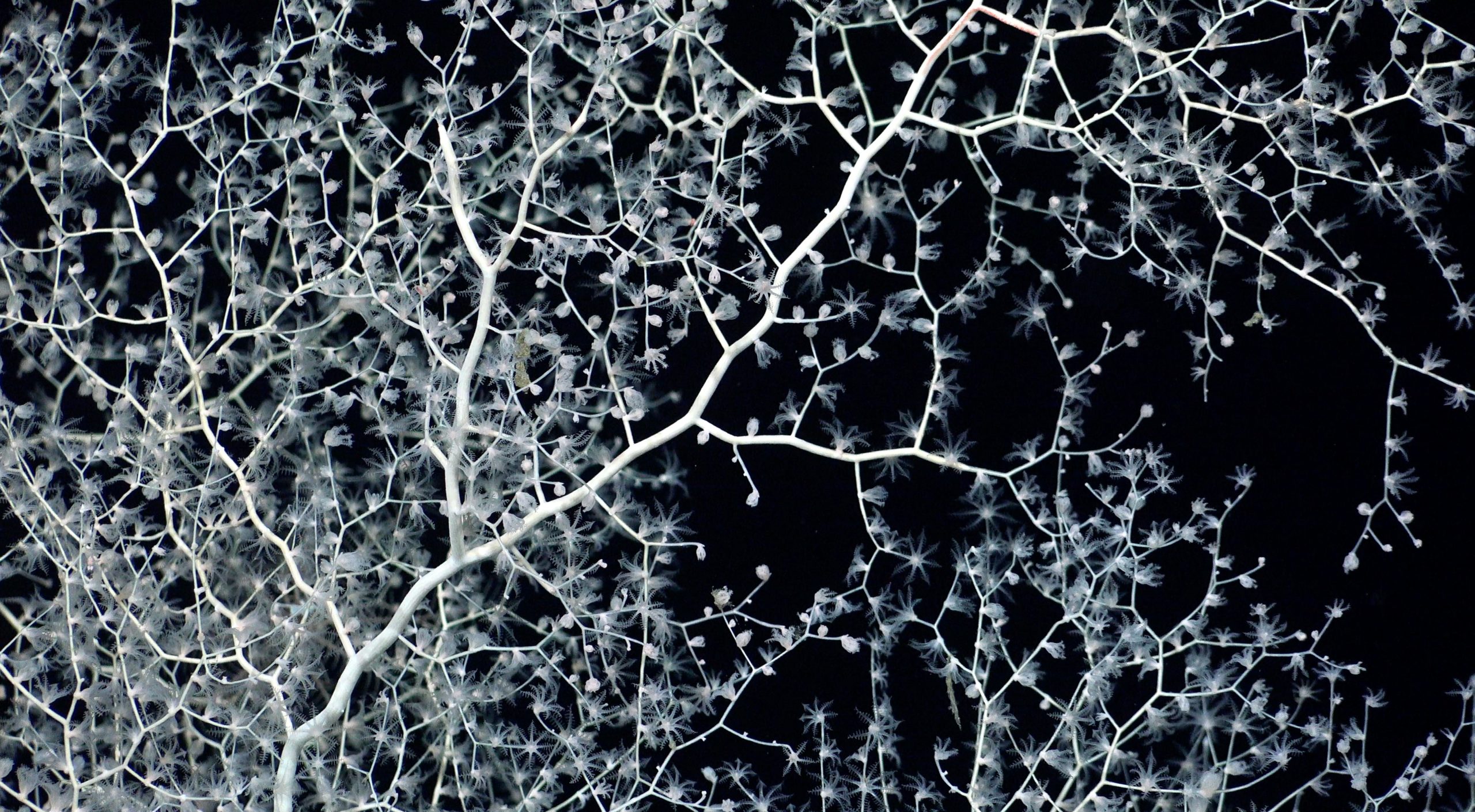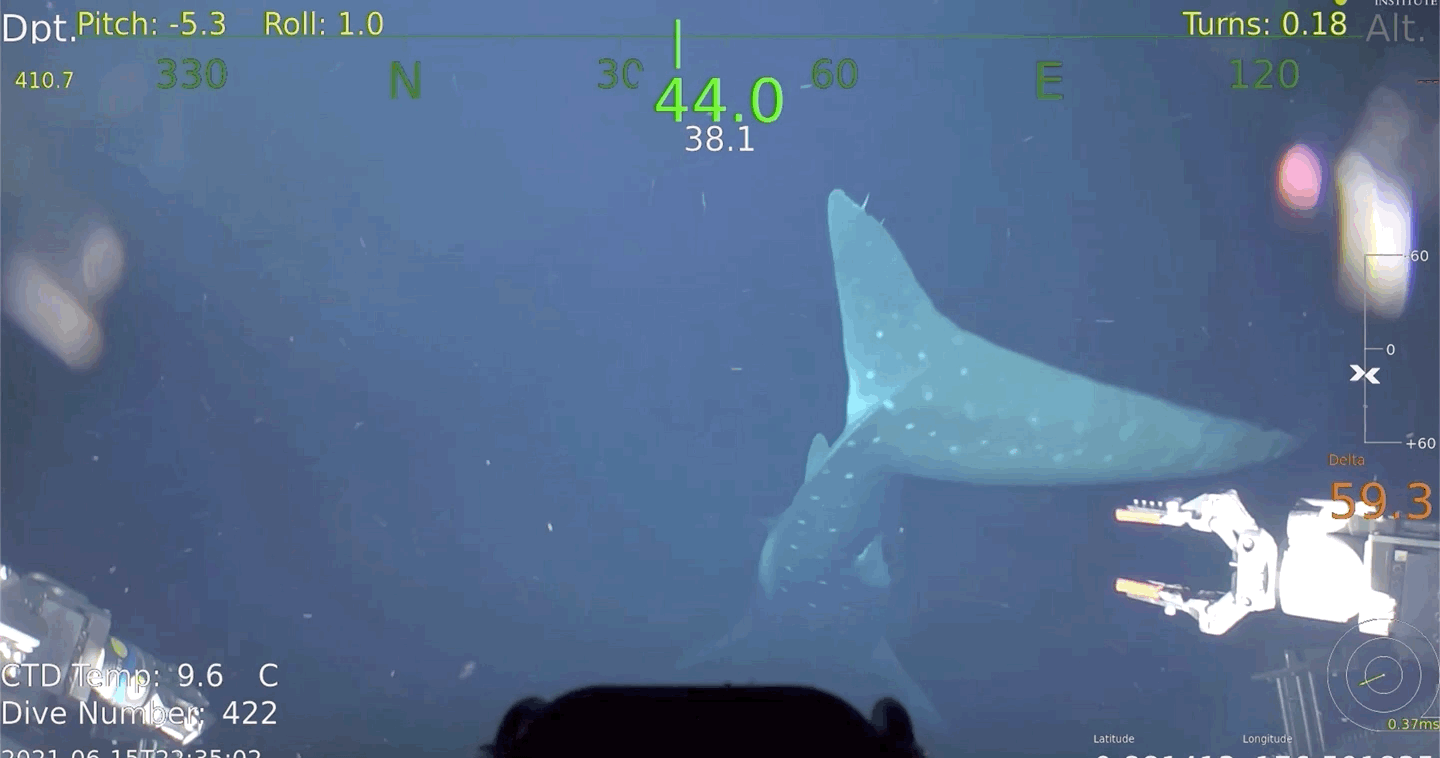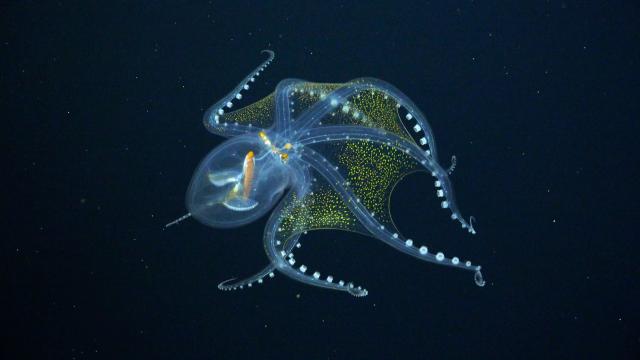New sea creatures just dropped.
In early June, a team of marine scientists with the Schmidt Ocean Institute boarded a research vessel called R/V Falkor and sailed out to the remote Phoenix Islands Archipelago in the west-central Pacific Ocean. For 34 days, they mapped out over 30,000 square kilometres of the ocean floor with high-resolution underwater cameras, and also got video of five additional underwater mountains.
“The coverage of this expedition was remarkable — we found changes in species across depth and geography around the Pacific equator and in the suite of organisms living on corals,” said Tim Shank, a biologist at the Woods HoIe Oceanographic Institution, in a press release. “Looking into these deep-sea communities has altered the way we think about how organisms live and interact on seamounts and how they maintain diversity of life in the deep ocean.”
Some of the animals they captured on camera had never before been documented by researchers, like a rare whale shark and an octopus that looks like it’s made of glass. The researchers arrived safely back ashore on Thursday, ready to share these discoveries. Here are some highlights.
A Stunning Sea Star

Along the way, the team captured footage of rare marine species and deep sea organisms with their remotely operated vehicle cameras. The images an video they brought back could help make the case for further protections and unlock secrets of the deep. Plus, these creatures also just rule and/or are bizarre. Take this deep sea star, which eats corals’ mucus, tissue, and even skeletons — gross!
Ghostly Coral

Using their underwater robot camera, which is adorably called SuBastian, scientists captured footage of this coral just north of the Pacific Remote Islands Marine National Monument, part of the Phoenix Archipelago that’s protected by Fish and Wildlife Service. It’s possibly a never-before-discovered species of gold coral.
These types of coral are already extremely rare. The image captured by the researchers shows not a gold-hued coral, but a ghostly white one. The scientists say the ghostly look comes from the coral’s sclerites — or hardened exoskeleton — getting embedded in its thick tissue.
The scientists didn’t just look at coral on their expedition. In fact, one of their biggest accomplishments was completing the first-ever comprehensive survey of coral and sponge predation. On the research vessel, the team conducted a series of experiments on coral and sponges to see how they react to more than 15 different microbial stimuli. The researchers said the new findings will help them learn more about how corals respond to grazing scars and wounding.
Whale Shark

On this expedition, the scientists took 21 dives into the deep sea, totaling more than 182 hours of exploration on the seafloor. One of the most exciting parts of those dives was using SuBastian to capture the first-ever footage of a whale shark.
The whale shark is a rare, deep-water species of fish that’s been around for millions of years. It got its name because of its length — the creatures can measure more than 12.2 metres long.
While people can swim with them, the fish are under threat. Their population in the Indian and Pacific Oceans has shrunk 63% over the past 75 years, due to overfishing and getting entangled in fishing gear. Whale sharks are considered endangered by the International Union for the Conservation of Nature, so seeing one swimming along in the wild is a true treat.
A Crab Eating a Fish
The scientists saw rare sea creatures on their journey, but just as interestingly, they also captured footage of sea creatures engaging in bizarre behaviour. Check out this video of a crab pulling a fish out of a coral and eating it. What a badass.
The scientists suspect that another crab, also shown in the video, may have hid the fish in the coral, protecting their secret snack. But their homie found it and couldn’t help but gobble it up.
“I’m hitting the OMG button,” you can hear one researcher say in the video. Same!
Glass Octopus
Another highlight of the researchers’ expedition: two rare encounters with a glass octopus, one of the strangest and coolest species I’ve ever seen. These cyberpunk-looking guys have transparent, gelatinous bodies. The only colourful parts of them are their optic nerves, eyeballs, and digestive tracts.
Capturing footage of the glass octopus wasn’t just cool but will likely also prove useful. Before this expedition, scientists had almost no documentation of the animal in the wild. That means they’ve mostly had to learn about it by studying specimens found in the gut contents of predators. But now, armed with close-range, high-definition video and photos, they might be able to learn more about the mysterious creatures.
“The ocean holds wonders and promises we haven’t even imagined, much less discovered,” Wendy Schmidt, co-founder of Schmidt Ocean Institute, said in a statement.
